The city offers dynamic, energetic, and eye-catching scenes. Learn tips to capture incredible urban portraits and have fun exploring the city.
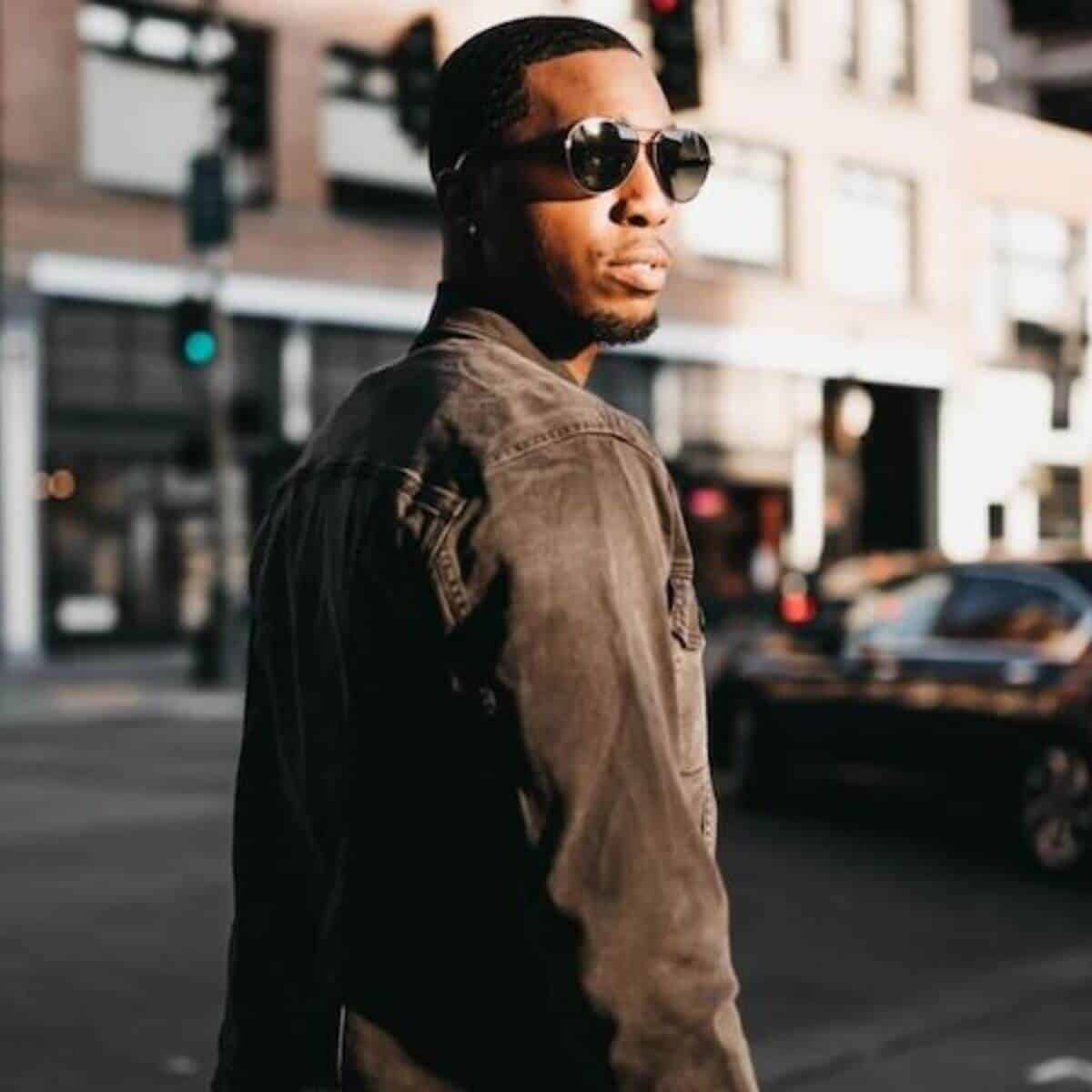
When shooting outdoor portraits, the location impacts your results.
One of the best locations for portrait photography is the city. There are many people, architectural styles, and an energetic feel.
Most of the architecture in United States cities is part of the modern movement.
Urban settings are accessible and dynamic. The following is your complete guide to capturing the best urban portraits.
What are urban portraits?
Urban portraits are under the street photography style.
The difference is the posing and staging, while street photography is candid.
When shooting urban portraits, explore different parts of the city. Walking a few blocks can lead to a different vibe.
The diversity of people, buildings, and cars makes urban portraits unique.
You capture pictures that studios, suburban, and rural locations cannot offer.
If you’re ready to take dynamic urban portraits, learn and remember the following tips.
Have a plan for the photoshoot
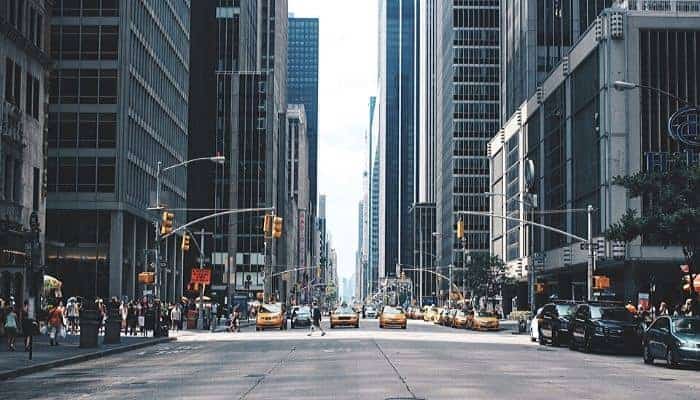
Take time before the session to create a plan. Think about the types of photos you want to capture.
Also, do location scouting to find the best backdrops. The mood and feelings that a portrait evokes change with different environments.
Another reason to do location scouting is to avoid obstacles. You can find locations in-person or using street view on a maps app.
Look at architecture, tunnels, parks, textures, rooftops, and other potential backdrops.
Find the best locations and go into the session with a vision. It’s essential for capturing striking urban portraits.
Use a versatile lens
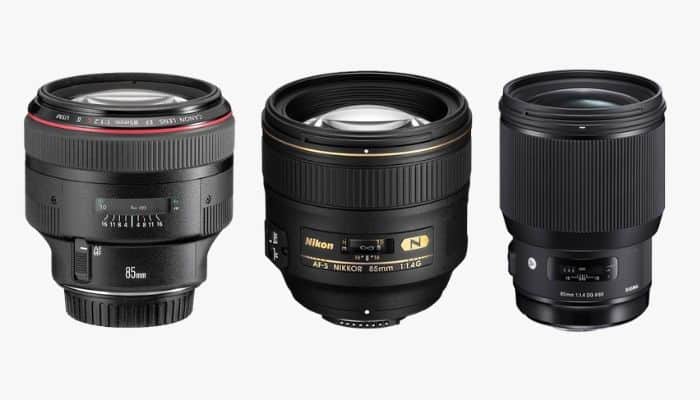
When shooting urban portraits, a versatile lens is essential.
It’s busy, and you’re walking around. So, you can only bring one or two lenses.
The ideal scenario is to carry one versatile lens to save time and energy.
A portrait lens with a wide aperture allows you to shoot any time of the day.
The shallow depth of field can also blur a background and isolate a subject.
A lens like the 24-70mm f/2.8 is the best for zoom lenses.
The best prime lenses for urban portraits are 35mm, 50mm, or 85mm, with an aperture of f/1.4 to f/1.8.
The different focal lengths allow you to get close and move away from your subject.
If you can only choose one lens, the 50mm f/1.8 is excellent. It’s lightweight, inexpensive, and versatile.
Work with the light
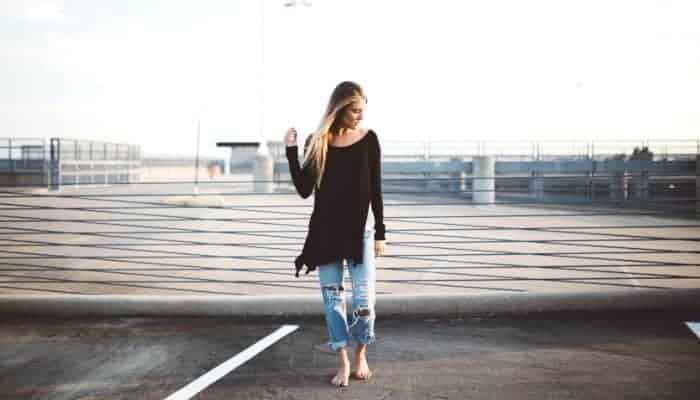
You must be adaptable when shooting outdoors because light changes throughout the day.
The golden hours and dusk are excellent times for photoshoots. But mid-day and night can also work well.
When there’s harsh lighting, look for shade or embrace the hard shadows. Focus on finding angles that make your subject look flattering.
Aside from a well-lit subject, check the rest of the frame and balance the exposure.
Urban portraits at night can be intimidating. While it may not work in rural areas, the city makes night-time portraits possible.
Use ambient light around you as the key light source. It can be light from a car, buildings, or neon signs.
Lights in the background are also excellent because you can capture beautiful bokeh.
If you adapt as the light changes, you’ll be able to shoot urban portraits anytime.
Isolate your subject from the crowd
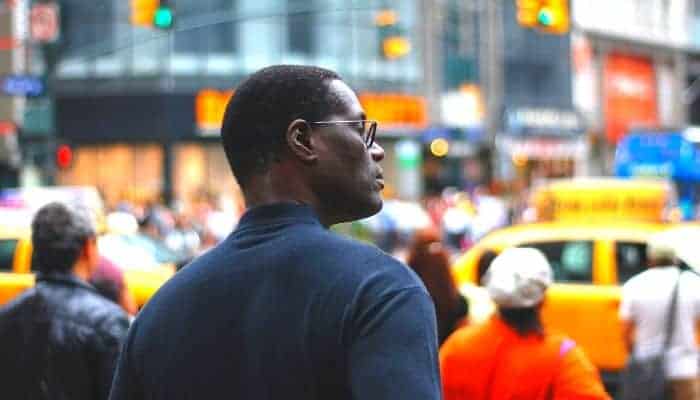
When photographing urban portraits during busy times or popular destinations, expect crowds.
It can be frustrating when people get in your shot or bump into you. So, you must be fast and isolate your subject.
Use a wide aperture to achieve a shallow depth of field. Then, focus on your subject.
The shallow depth of field blurs the background and foreground.
It results in an eye-catching portrait with your subject as the focal point.
The people around your subject also add interest. They help tell the story and show the location’s energy.
Another way to isolate your subject is to shoot from a low angle. It makes your subject look taller and blocks out most people.
Use reflections or shoot through glass
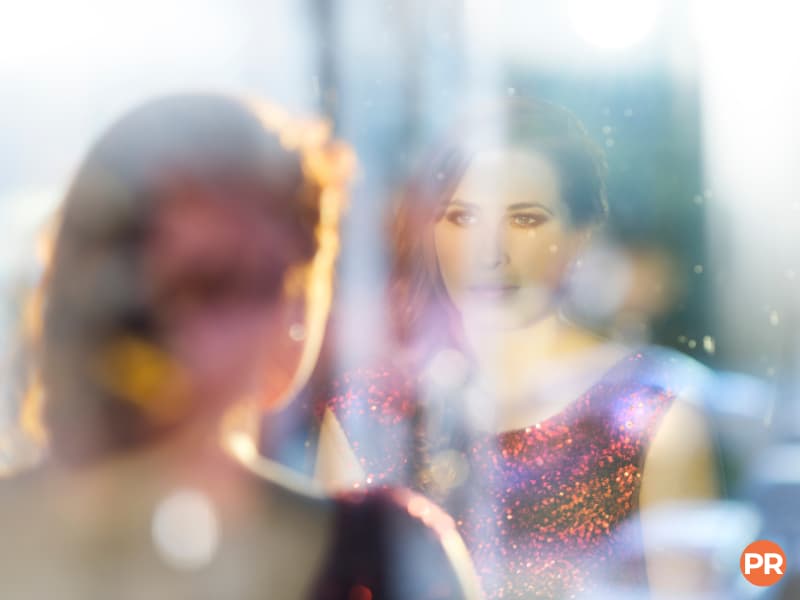
During the photoshoot, watch for reflections or locations to shoot through glass. Both options lead to creative urban portraits.
Cities are full of glass buildings and windows. So, finding striking compositions should be straightforward.
When shooting reflections or through glass, make sure you balance the exposure.
It ensures the subject is the focal point without other elements overpowering them.
Use textures, patterns, and art
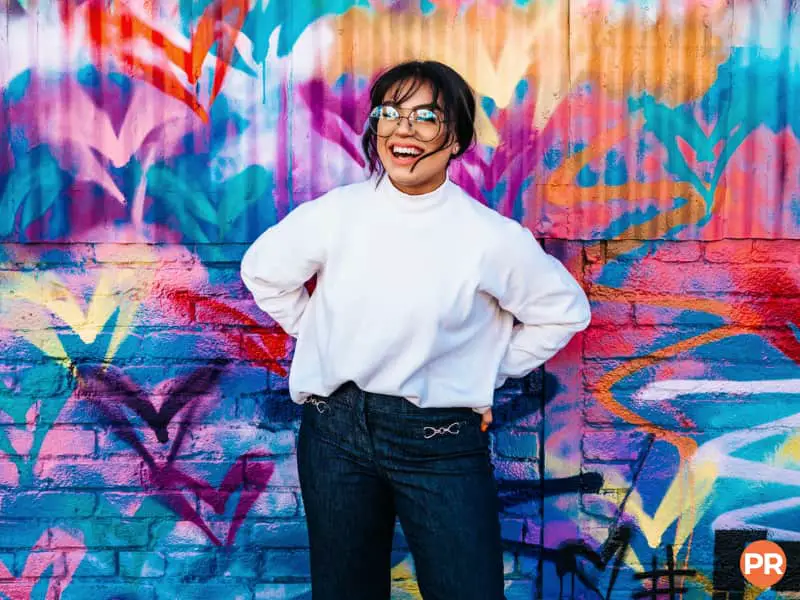
Urban areas have interesting textures, beautiful patterns, and unique art. Each of them also serves as an excellent background idea.
It’s best to shoot closer to the background, as you can capture the details.
It can add another dimension and more interest to your photos.
Capture walking shots
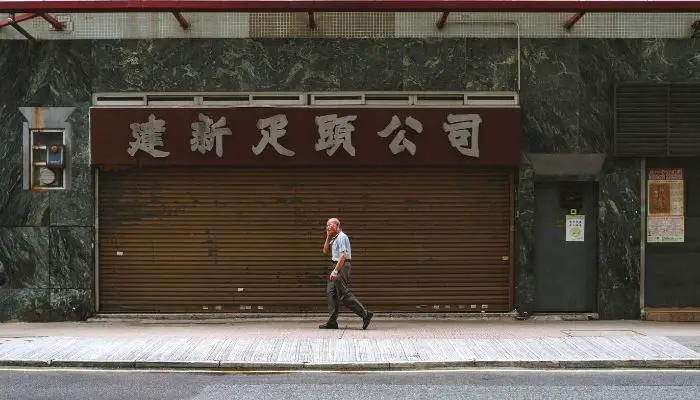
Walking photos are an excellent way to capture movement. It makes the image more interesting.
You can capture images of your subject crossing a street or walking near buildings.
The best way to take sharp portraits of people walking is to use continuous shooting or burst mode.
Your camera will take a lot of photos. Some will turn out crisp and in-focus.
When taking walking shots, tell the model to walk at their normal speed or faster. It ensures the photos look authentic.
Use the skyline as a backdrop
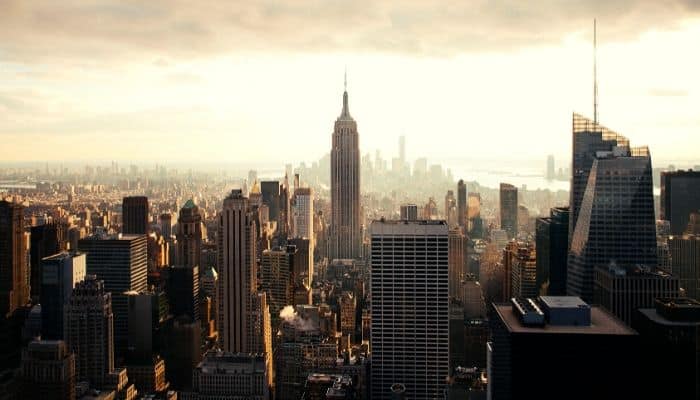
One of the best parts of an urban photoshoot is the skyline.
It’s an iconic and striking part of the city. So, use it as a backdrop for urban portraits.
You can find a higher spot like a balcony or go to a viewpoint.
The drawback to finding a good view of the skyline is that you may need to drive, walk, or take the bus there.
Balconies and rooftops may offer a beautiful view without leaving the city.
The skyline adds to the story of an image by telling a viewer about the location.
It’s an excellent backdrop because it’s stunning all day.
Be safe
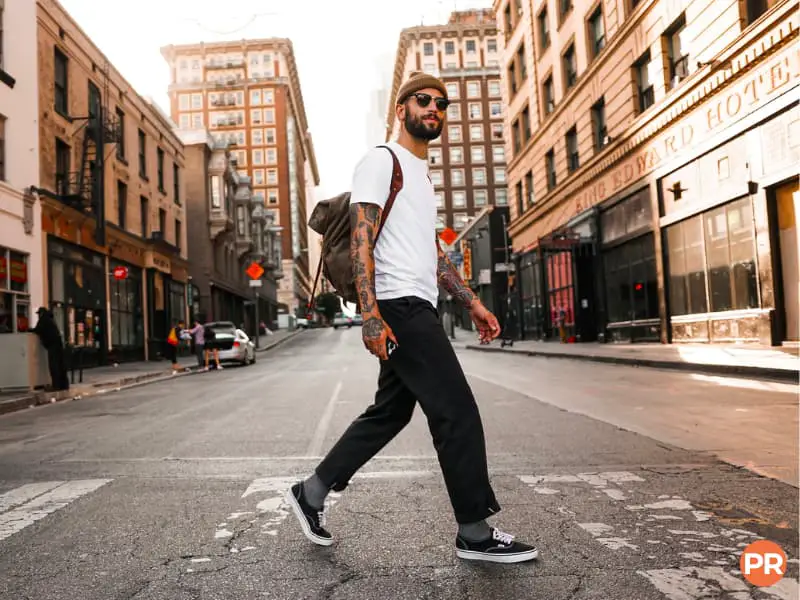
Safety must be a priority when shooting in the city. Be aware of the crime, cars, cyclists, and people.
Keep your camera gear safe, and never leave your bags alone.
It’s also best to avoid places of isolation, as they may not be safe.
Listen to your intuition. If you or the model feel uncomfortable, move to a different location.
Conclusion
Cities are full of photo opportunities. You’ll find eye-catching backdrops and leading lines for better composition.
Urban portraits are excellent because you get one-of-a-kind pictures.
So, use the tips to take your urban photography to the next level.
Related: How to Use Diagonal Lines in Photography
Featured photo by David Em/Portraits Refined.

Comments are closed.